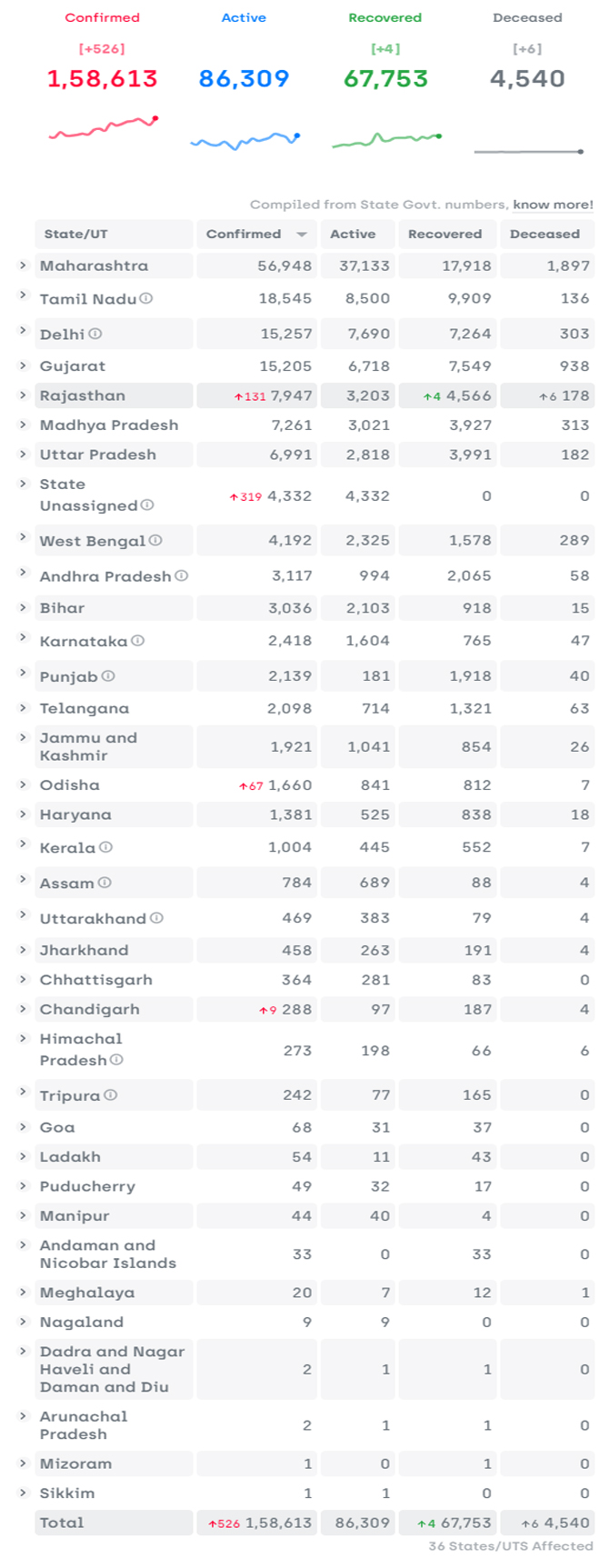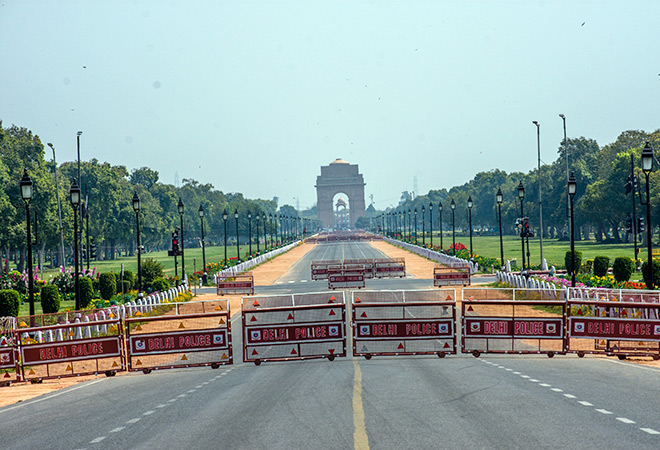India’s Covid-19 scenario is causing more concern for the country’s citizens.
As of May 28, 2020, the number of positive cases has reached 1.58 lakhs.
Different states are contributing to the overall rise, with 6,500 new cases reported in the last 24 hours.
Delhi reported another new single-day spike of 792, and Maharashtra saw 2,190 positive cases in the last 24 hours.
Maharashtra has 56,948 positive cases, with more than 34,000 confirmed cases in Mumbai alone, which is alarming!
 Source: covid19india.org
Source: covid19india.org
With 194 deaths from different states in the last 24 hours, India’s Covid-19 death toll has reached 4,540.
Maharashtra also became the first state in the country to touch 100 mark for Covid-19 deaths.
Now, there are 86,309 active cases in the country and 67,753 recovered, so far, with 42 percent recovery rate.
Meanwhile, Tamil Nadu reported 817 new cases in the last 24 hours, taking the state’s overall toll to 18,545.
Gujarat also saw 374 new cases in the last 24 hours and 23 people died on May 27, 2020, alone. Out of the total death toll, Ahmedabad alone has 764 deaths.
Overall, more than 80 percent of cases are coming from five states, including Maharashtra, Tamil Nadu, Delhi, Gujarat and MP.
While, five major cities including Mumbai, Delhi, Ahmedabad and Hyderabad are contributing to more than 60 percent of the cases.
The majority of the death cases had people aged 60 years and older, with many underlying conditions.
Lockdown Controlled, But Grim Situation Ahead!

As the sources say, the two-month-long lockdown could prevent the loss of 37,000-78,000 lives.
A paper published in the Harvard Data Science Review says an 8-week lockdown can prevent 2 million cases and 60,000 deaths (at 3 percent fatality rate).
“Infection has remained limited to certain areas. This also gives us the confidence to open up other areas. It is so far an urban disease,” says VK Paul, who heads the medical emergency management plan for Covid-19.
According to epidemiologists, the rise in reported cases is due to increased testing.
Though the country has extended its testing capacity from 10,000 per day (in the past) to further, it remains among the lowest in the world per head of population – 2,198 tests per million people.
Though the virus remained much in urban areas, a large movement of migrant workers now indicates the spread of infection to rural India.
“Things are going to get pretty grim in a few weeks,” says one of the leading virologists.
“We need reliable forecasting models with a projection for the next few weeks for the country and the states. We have to learn how to manage and minimize risk in our daily lives as the virus is going to be with us,” says Dr. Mukherjee.






